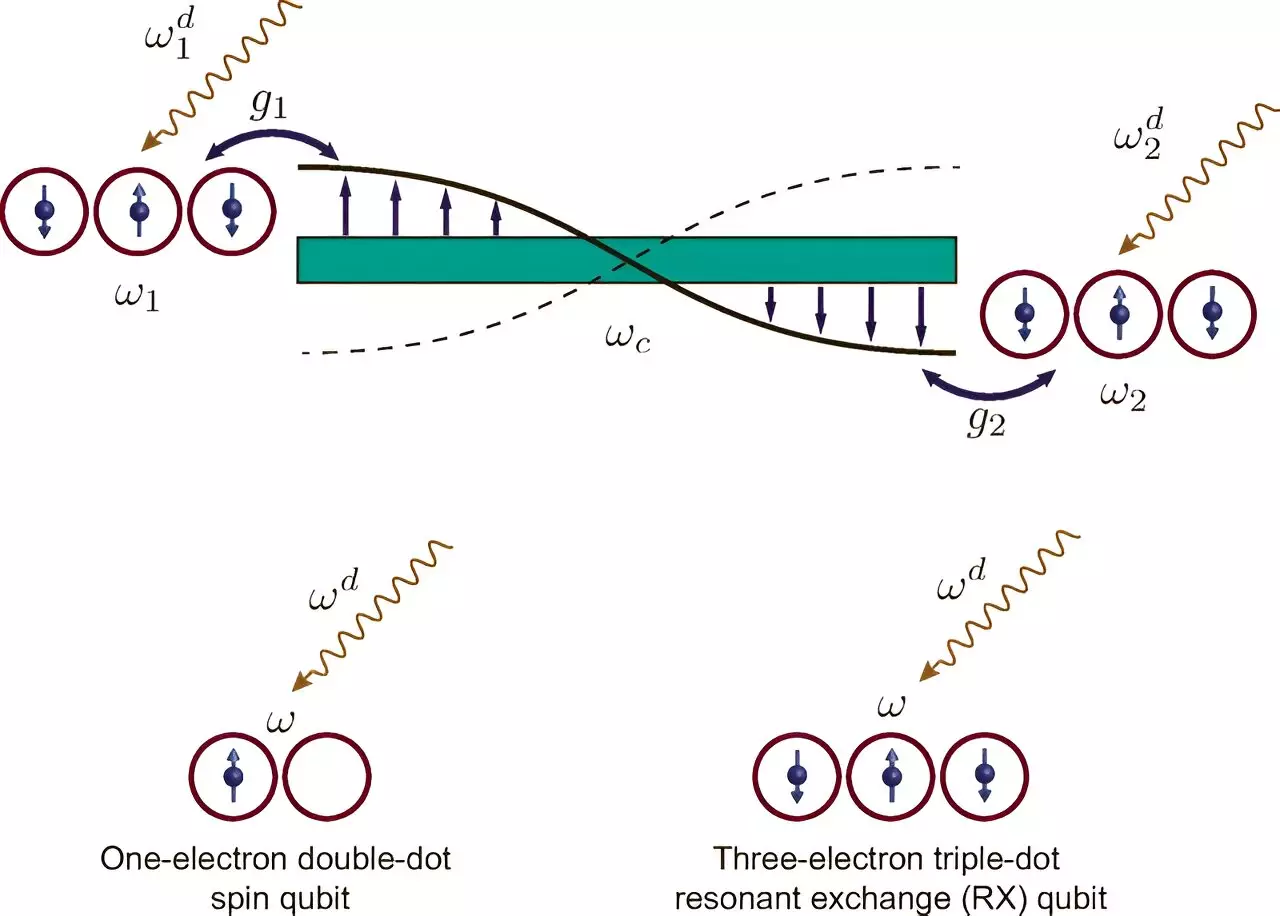Quantum computing represents an exciting frontier in computational capability, leveraging phenomena of quantum mechanics to perform calculations at speeds unattainable by traditional supercomputers. Central to this groundbreaking technology are quantum bits, or qubits, which can simultaneously exist in multiple states. For quantum computers to become widely practical, they must scale effectively, an endeavor fraught with challenges, especially concerning the control and connection of a large number of qubits. Recent research led by a team from the University of Rhode Island proposes a modular strategy for overcoming these hurdles, providing a blueprint for the future of scalable quantum systems.
At the heart of any quantum computer is the qubit, a unit of information that operates distinctly from classical bits by existing in superpositions of states. This ability to hold multiple values simultaneously theoretically allows for exponential speed improvements in calculations. However, leveraging the power of qubits demands a significant number of them to work together, often requiring millions to realize their full transformative potential. Unfortunately, as researchers attempt to scale quantum processors, the complexities of controlling numerous qubits simultaneously complicate matters, leading to significant obstacles.
The need for sophisticated electronics to manage even a handful of qubits unveils a daunting challenge: as the number of qubits increases, so too does the complexity of control circuitry. Without robust solutions, the promise of quantum computing risks being relegated to the realm of theoretical possibilities.
A recent study outlines a potential breakthrough in scaling quantum processors effectively. Led by Professor Vanita Srinivasa at the University of Rhode Island, the team proposes a modular approach, which likens the assembly of complex quantum systems to building with LEGO blocks. Rather than continuously integrating additional qubits into a singular array, the proposed method suggests employing smaller, manageable modules linked by flexible connections. This innovative architecture could foster more intricate operations while maintaining strong performance across extensive distances.
One of the most critical findings of this research emphasizes the ability to link qubits without needing to synchronize every frequency involved. By generating additional frequencies through oscillating voltages applied to individual qubits, Srinivasa and her collaborators illustrated a method that allows the establishment of connections without necessitating exact resonance conditions. This technological advancement opens multiple paths for entangling operations, amplifying the operational capabilities of large-scale quantum systems.
Utilizing Semiconductor Technology: A Promising Proposition
The utilization of semiconductor materials in fabricating quantum processors brings further promise to this modular approach. State-of-the-art semiconductor fabrication techniques can create highly compact qubits, bolstered by the inherent stability provided by electron spin properties which mitigate the risks of quantum information loss. However, the difficulties associated with seamlessly adding additional qubits to a single processing unit remain. The research team’s contributions tackle these issues by delineating methods for entangling spin qubits spaced over significant distances, all while retaining flexibility in their operational frequencies.
Srinivasa’s metaphor of constructing systems with modular components encapsulates this vision aptly: each module acts as an independent contributor to the overall quantum machine. Should the long-range linking function effectively, the potential to significantly expand the number of usable qubits without the restrictions of classical control circuitry would revolutionize the field.
The researchers explored a promising avenue involving quantum dot-based spin qubits that interact through microwave photons, utilizing a method to establish resonance across the disparate frequency domains of the interacting components. By carefully tuning these frequencies and allowing for several operations to occur simultaneously, their findings demonstrate the ability to preserve individual control of each qubit while enabling far-reaching entanglements.
Novel strategies for interference management are also highlighted, promising less susceptibility to photon leakage compared to previous paradigms. This robustness enhances long-distance connections, ensuring reliability in the transfer of quantum information—a cornerstone for sustaining the operational integrity of quantum computing systems as they scale.
As the field of quantum computing promisess revolutionary capabilities, the challenges associated with scaling qubit technology hinder progress. However, the innovative modular approach proposed by Srinivasa and her team signifies a vital step forward. By emphasizing tunable connections and robust flexible linking tactics, researchers can lay the groundwork for future architectures capable of encompassing greater numbers of qubits without sacrificing control or performance.
As advances continue, the vision of a functional, scalable quantum computer moving beyond theoretical frameworks into practical application edges closer to reality—an exciting prospect with implications that could redefine computational paradigms.


Leave a Reply